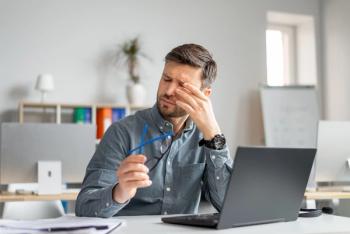
Contact lens wear schedules: which is best for your patients?
During the Contact Lens Global Forum, a partnership between Vision Expo East and the British Contact Lens Association, David Kading, OD, FAAO, Shelly Bansal, FBDO, Hons CL, FBCLA, and Jack Shaeffer, OD, argued their cases for various contact lens wearing schedules.
New York City- During the Contact Lens Global Forum, a partnership between
Dr. Kading listed his top 10 reasons why he often chooses daily disposables for his patients:
1. Daily disposables are a new trend in contact lens technology.
2. Daily disposables use fresh materials.
3. Daily disposables are great for patients’ with allergies.
4. Daily disposables provide comfort.
5. Daily disposables provide cleanliness.
6. Daily disposables increase compliance.
7. Daily disposables provide freedom from solutions.
8. Daily disposables provide options for patients with astigmatism.
9. Daily disposables provide options for presbyopic patients.
10. Daily disposables are great for your practice.
Dr. Kading also says daily disposables mean patients don’t have to use a case, 70% of which are contaminated. He also says patients are not replacing them regularly.
“After 10 years, they’ve been through 3 marriages, but they still have that same case,” he says.
Daily disposables also increase compliance, as on often cause of non-compliance is forgetting which day to change lenses.
“People do not care for their lenses the way they’re supposed to. What could be easier than saying ‘Don’t take care of your lenses at all’?” says Dr. Kading.
Dr. Bansal says that while daily disposables are convenient, they are offered in limited parameters and can be costly for patients.
Instead, he argued for 2-week lenses, saying that the quality of vision, overall comfort, and compliance drop off after 2 weeks of wear, compared to monthly contact lens patients, who are prone to extreme overwear.
Dr. Bansal recommends setting up a system that will notify patients when it is time to change their lenses.
Dr. Bansal says eyecare practitioners must:
• Understand patient behavior and meet patient needs
• Address common modifiable risk factors
• Tailor recommendations to the individual
• Engage with and empower patients
• Review, remind, and reinforce
Dr. Schaeffer says monthly contact lenses are cost effective and have compliance rates second only to daily disposables. It is easy for patients to remember to change their lenses on the first of each month.
But Dr. Schaeffer also recommends using the medical model, using specific programs for the preventative treatment of your patients. Your regimen for at-risk patients should not be the same as those who are not at risk.
“Take back control of your patients’ health care and well being,” says Dr. Schaeffer.
Newsletter
Want more insights like this? Subscribe to Optometry Times and get clinical pearls and practice tips delivered straight to your inbox.


















































.png)


